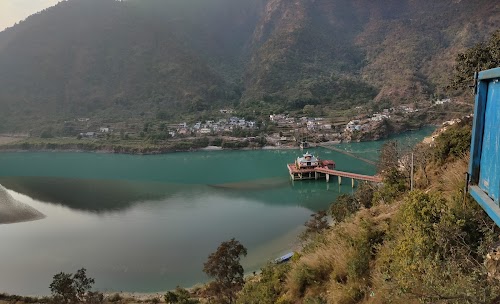
Alakananda River
Badrinath, India
- Attend the evening aarti ceremony.
- Capture scenic views of the river.
- Enjoy a peaceful walk along the river.
- Explore nearby temples and ghats.
- Meditate by the riverbank.
- Take a holy dip in the river.
- Visit the confluence of rivers.
Known for:
Description:
The Alaknanda River, a major Himalayan river in Uttarakhand, India, is a significant attraction for tourists visiting Badrinath. It originates from the confluence of Satopanth Glacier and Bhagirath Kharak Glacier near Chaukhamba peak. Known for its turquoise waters and scenic beauty, it offers breathtaking views of the surrounding snow-capped mountains. The river is considered sacred by Hindus, and taking a dip in its cold waters is believed to cleanse sins. The Alaknanda's course is marked by several important pilgrimage sites, making it a vital part of the Char Dham Yatra. The gushing sound of the river adds to the spiritual ambiance of Badrinath, creating a serene and unforgettable experience for visitors. The river's banks provide opportunities for peaceful walks and photography, allowing tourists to immerse themselves in the natural beauty of the Himalayas.
History:
The Alaknanda River holds immense historical and religious significance in Hinduism. It is mentioned in ancient scriptures and is considered the abode of deities. The river has been a lifeline for the region for centuries, supporting agriculture and providing water to numerous settlements. The establishment of Badrinath Temple on its banks further enhanced its importance as a pilgrimage destination. Historically, the river served as a natural boundary and a crucial trade route. Over time, various rulers and dynasties have contributed to the development of infrastructure around the river, including bridges and ghats, facilitating easier access for pilgrims. The Alaknanda's history is intertwined with the spiritual and cultural heritage of the Garhwal Himalayas, making it a revered and cherished river.